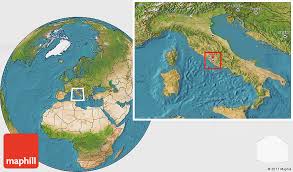Nestled in the heart of Rome, Vatican City is the smallest independent state in the world, both in area and population. Despite its size—just 44 hectares (110 acres)—Vatican City is packed with historic landmarks, religious sites, museums, gardens, and administrative buildings that hold immense cultural and spiritual significance. For first-time visitors, having a detailed Vatican City map is essential to fully navigate and appreciate this unique enclave. Whether you’re planning a pilgrimage, a cultural tour, or a short visit during your trip to Rome, this guide will help you understand the layout, key landmarks, and navigational tips to make the most of your time within Vatican walls.
Understanding the Layout of Vatican City
Because of its small size, the layout of Vatican City is relatively simple but extremely dense with attractions. The entire country is surrounded by a fortified wall, with most access points located along Via della Conciliazione, leading from Rome’s Castel Sant’Angelo straight into St. Peter’s Square. The map of Vatican City can be divided into a few main zones: St. Peter’s Basilica and Square, the Vatican Museums, the Apostolic Palace (Papal residence), the Sistine Chapel, Vatican Gardens, and various administrative offices and residences. Although compact, visitors often underestimate the walking distance between these landmarks, especially if visiting multiple sites in one day. A map helps orient you not only spatially but also historically, showing how the religious, cultural, and political sectors are laid out in harmony.
St. Peter’s Basilica and Square
The centerpiece of any Vatican City map is St. Peter’s Basilica, one of the most important churches in Christianity and the burial site of Saint Peter, the first pope. The basilica is fronted by the magnificent St. Peter’s Square, designed by Gian Lorenzo Bernini in the 17th century. This vast, elliptical plaza is flanked by colonnades and adorned with Egyptian obelisks, fountains, and statues of saints. The square is the primary entrance point to Vatican City and can be easily located on any map. Adjacent to the square is the Vatican Post Office, the Swiss Guard checkpoint, and access to the basilica’s dome climb, grottoes, and papal tombs. Maps usually highlight these features with icons and walking paths to help tourists find entrances and exits efficiently.
The Vatican Museums and Sistine Chapel
To the north of St. Peter’s Basilica lies one of the most famous art collections in the world—the Vatican Museums. These museums house priceless works by Michelangelo, Raphael, Caravaggio, and many other legendary artists. Entry to the museums is from Viale Vaticano, on the outer wall of the city, not directly from St. Peter’s Square. A map will help you locate the museum entrance, which is often confusing for visitors. Inside, the museums are a maze of galleries, halls, courtyards, and chapels, culminating in the Sistine Chapel, famous for Michelangelo’s ceiling fresco and Last Judgment. A Vatican map will often outline the museum path, showing visitors how to navigate from the Pinecone Courtyard through the Raphael Rooms to the Sistine Chapel. Maps also mark elevators and accessible routes for visitors with mobility concerns.
Vatican Gardens and Hidden Areas
Roughly half of Vatican City’s territory is taken up by the Vatican Gardens, a collection of botanical gardens, sculptures, and fountains that date back to the Renaissance. These gardens are not open to the general public without a guided tour, but their location is clearly marked on official Vatican City maps. The gardens are nestled behind the basilica and the Apostolic Palace and are home to papal retreats, private chapels, and even the Vatican radio tower. A detailed map will also indicate Vatican City’s heliport, used for papal transport, and less visible areas like the Governatorato (Governor’s Palace), Vatican Pharmacy, and train station, which are typically closed to tourists but part of the city’s functioning infrastructure.
Entrances and Access Points
Understanding entry and exit points is one of the most practical reasons to use a Vatican City map. While the city is entirely surrounded by Rome, the two most common entrances are:
- St. Peter’s Square – for entry to St. Peter’s Basilica and the square itself
- Viale Vaticano – for entry to the Vatican Museums and Sistine Chapel
There is no general internal passage from the museums directly into the basilica unless you’re on a guided tour, which is why route planning is important. Exits from the museums lead you back into Rome’s streets, not the basilica or square. A map clearly shows how to navigate between these major points and where the security checkpoints and ticket offices are located. For planning purposes, this Vatican Museums visitor page includes updated access info and downloadable maps.
Practical Tips for Navigating with a Map
If you’re visiting Vatican City, physical and digital maps are both useful. You can often find printed maps at hotel desks in Rome or at the entrance to the museums and basilica. Digital apps like Google Maps work well, but keep in mind that GPS signals may be weak inside thick stone buildings or underground areas like the papal tombs. Many tourists benefit from using a PDF or offline map that outlines walking paths, points of interest, and estimated walking times. Using a map also helps with time management—it’s easy to spend over 3 hours in the Vatican Museums alone, so planning your route in advance can help avoid fatigue and confusion. Be aware of restricted areas marked on maps, especially those reserved for Vatican residents, clergy, or security personnel.
Vatican City for Pilgrims
For religious pilgrims, a Vatican City map can serve a spiritual and practical function. It helps locate pilgrimage-specific areas such as the Tomb of Saint Peter, Chapel of the Blessed Sacrament, and St. Peter’s Altar. Maps for pilgrims often include suggested prayer routes, confession chapels, and access times for mass and adoration. They also highlight services like the Pilgrims’ Information Office, where visitors can obtain guidance in multiple languages. Pilgrims attending special events, such as papal audiences or canonizations, can use maps to understand seating arrangements, gate numbers, and emergency exits in St. Peter’s Square. For spiritual events and religious guidance, refer to the Vatican.va event calendar, which provides schedules and announcements from the Holy See.
Historical and Symbolic Map Features
Maps of Vatican City are not just practical—they also reflect the symbolism and heritage of the Church. Many maps display iconography, such as the Keys of St. Peter, the Papal Tiara, and layout references to biblical symbolism. The city’s design places the basilica at its heart, symbolizing its central role in global Catholicism. The layout itself—with spiritual, cultural, and governmental areas unified in one space—represents the unity of faith and authority. Maps can also serve as educational tools, explaining how Vatican City functions as both a religious center and a sovereign nation-state, complete with its own currency, stamps, radio station, and diplomatic corps.
Where to Get a Vatican City Map
While physical maps are not always handed out freely inside Vatican City, they are often included in museum entry tickets, guided tours, or available at souvenir shops near the entrance. Many third-party websites also offer printable PDF maps that include walking routes, security checkpoints, and historical summaries. If you’re planning your visit in advance, it’s helpful to download a high-resolution map before arriving. This allows you to understand where everything is and avoid unnecessary backtracking. Some tour operators even provide custom maps tailored to the itinerary of your guided tour.
Final Thoughts
Navigating Vatican City is easier when you have a clear, accurate map in hand. Though compact, the city is rich with spiritual significance, historical landmarks, artistic treasures, and architectural marvels. A good map will help you prioritize your visit, manage your time, and avoid the common pitfalls that first-time visitors face. Whether you’re coming to admire the masterpieces of Michelangelo, attend a papal audience, or simply walk in the footsteps of saints, Vatican City offers a once-in-a-lifetime experience—and knowing your way around will make it even more meaningful. In a city where every corner tells a story, a map is not just a navigational tool—it’s your gateway to understanding one of the most iconic places on Earth.












